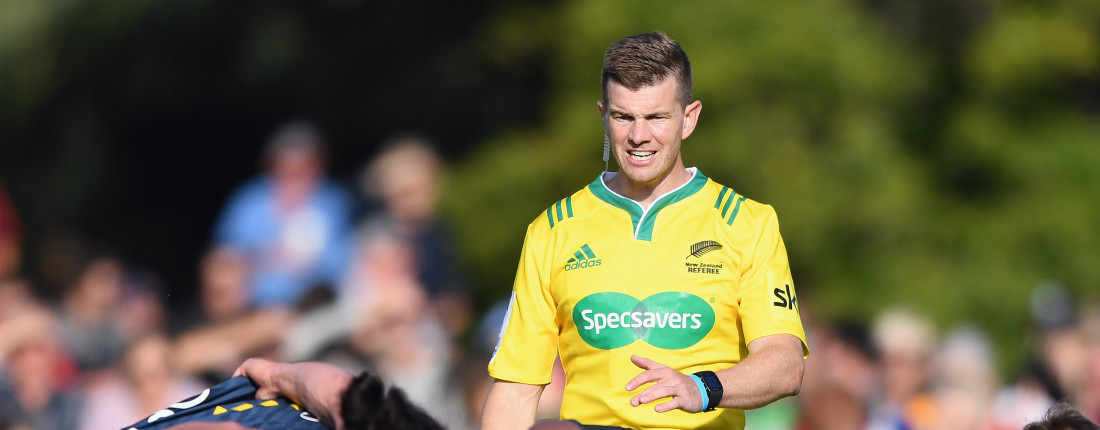
New Zealand Rugby's (NZR) Head of High Performance Mike Anthony said speeding up the game had been one of the objectives behind the initiatives.
Statistics from Australia's Super Rugby AU competition last year where the goal line drop-out featured was that there was on average 78 seconds difference between the time taken for a five-metre scrum versus the time taken for a goal line drop-out.
Statistics from Super Rugby AU showed on average it took 1min 52sec to take a five-metre scrum with defensive teams regularly taking longer to prepare. By comparison, a goal-line dropout took about 30 seconds on average.
NZR National Referee manager Bryce Lawrence said with the emphasis on creating more space, teams would likely have to drop their wings back in defence which would leave more space for attack.
He added that under the traditional laws teams with a Jordie Barrett-type kicker could drop-kick the ball 70m downfield from a 22m restart. Evidence showed long kicks were then most often kicked back by the receiving team.
However, from a goal line drop-out, the ball was taken around halfway, with the result that teams looked to run the ball back.
Regarding the captain's referral, Lawrence said the system would take some adjusting to by teams, and the evidence from rugby league was that early on teams had not got their challenges right.
Lawrence admitted the referees didn't know how teams would choose to use it.
"I imagine teams will be pretty careful about when they use it. They'll either be 100 percent sure the ref's got something wrong or else they'll be saving it up, potentially, for the end of the game," he said.
Sky Super Rugby Aotearoa club coaches had been keen to have the captain's referral after last season's tournament, and the referees were also supportive.
"They didn't want to be making those mistakes…and affecting the outcome of the game either.
"Our competition is so competitive, and with so many close games, that the coaches and referees just want the right decision to be made and the right team to win," he said.
Anthony said there had been discussion on the 10-second limit for referrals. They were wary of directions from coaches' boxes delivered by water carriers sprinting onto the field with messages.
"That's why you have to be very specific, very quickly. We won't be allowing people to sprint out and do that. We want…it's clear and obvious. Players know when something has been missed and they can make that call," he said.
Lawrence added that if there was a referral, the TMO could go back to the last restart instead of the two phases previously allowed.
The example he gave was if there was a knock-on at the base of a ruck and a try scored six phases later the defending team could challenge by saying there had been a knock-on at the ruck six phases back.
"We can actually go back and check that. That's a positive because the TMO protocol was quite restrictive at times," he said.
Lawrence said offside-play would again be an area of attention for referees after comments from coaches highlighted that a strong emphasis had been placed on it at the start of the competition but it had tapered off.
"What I'm hearing from teams is that they would like us to be consistently strong for the whole 80 minutes for the whole competition," he said.
The discipline surrounding offside play was something coaches were working on with their teams and good teams adjusted quickly,” he said.
"I think it is good for the game. We saw that. We had a lot of quick ball, some good attack, just at times we got a lack of space so I don't think anyone criticises off-side penalties. Most people are saying there is not enough space in the game.
"Space is the main thing coaches give us feedback on," he said.
